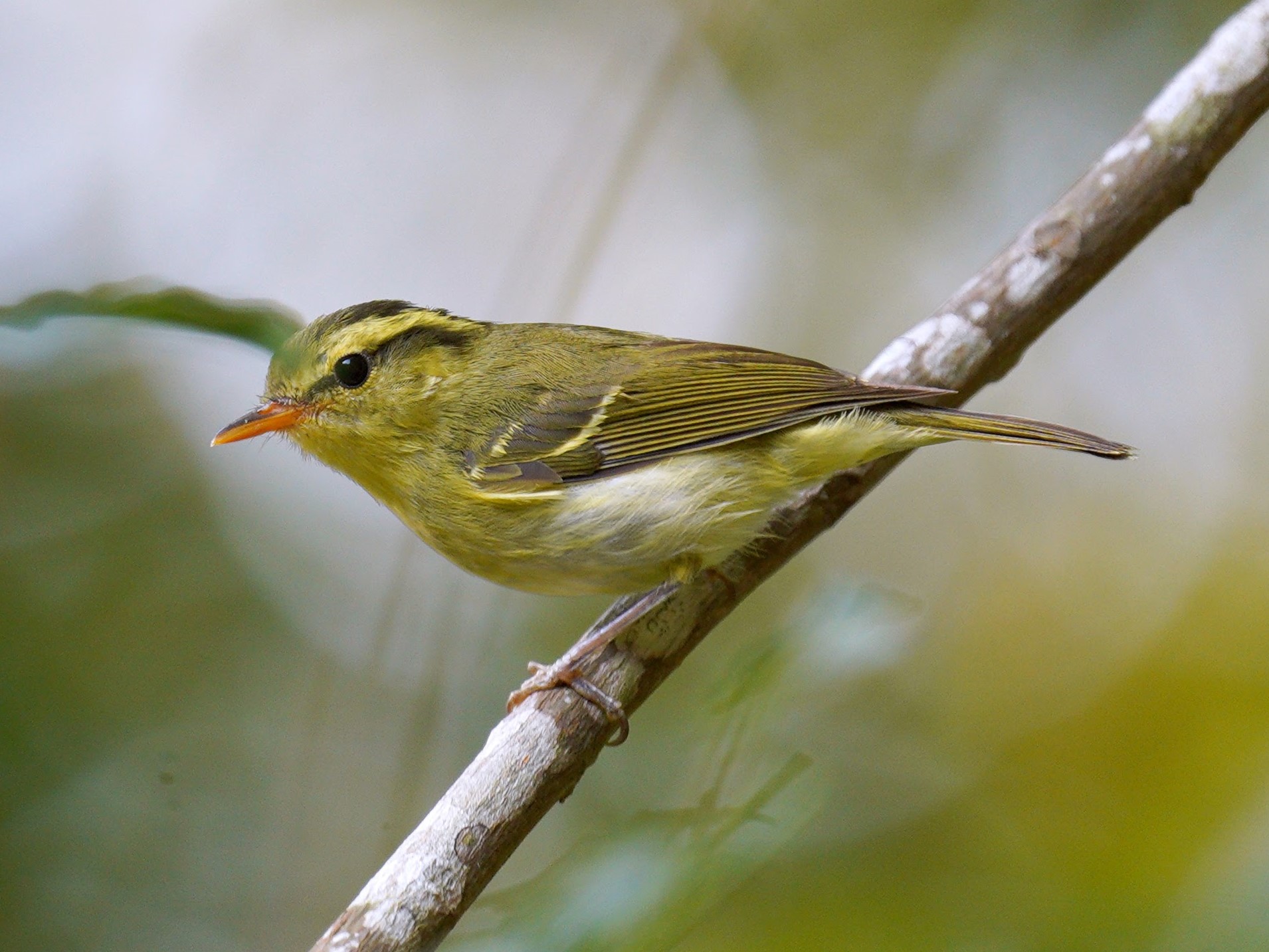Hartert’s Warbler Phylloscopus goodsoni 古氏[冠紋]柳鶯
Category I. Uncommon winter visitor to closed-canopy forest and shrubland.
IDENTIFICATION

Mar. 2022, Roman Lo.
10.5-12 cm. Medium-sized Phylloscopus warbler that has characteristic habit of foraging on tree trunks in the manner of nuthatches. Fairly dark greyish-green lateral crown stripe and eye stripe, both of which meet the bill; the crown stripes are darker at the rear. The central crown stripe is dull whitish, poorly-marked on the fore crown but becomes broad and distinct on the hind crown; the supercilium is broad, yellowish near the front and whitish in the rear. Upperparts quite dark uniform olive-green, two yellowish wing bars. Pale orange lower mandible, fairly dark legs.
The nominate subspecies has whitish underparts with a variable yellow wash, while fokiensis lacks or has only limited yellowish; however, not all birds can be assigned.
VOCALISATIONS
The call is multisyllabic and distinctive, resembling in tone that of a Parus tit: ‘pit-chee’ or ‘pit-chee churoo’.
The song is a simple, repeated phrase.
DISTRIBUTION & HABITAT PREFERENCE
Occurs in closed-canopy forest and shrubland at low densities, which is reflected in the fact it was recorded in no more than 0.7% of 1km squares during the winter atlas surveys of 2001-05 and 2016-19. Mainly recorded in the Tai Mo Shan massif, Tai Lam, northeast New Territories, Sai Kung and Lantau, its distribution reflects the presence of mature woodland.
OCCURRENCE
Uncommon winter visitor from November to March, mainly from the second week of December to the first week of February (Figure 1). Extreme dates are 5 September and 10 April.
Although first discovered in Hong Kong in 1978, it was not until 1985 that Hartert’s Leaf Warbler was known to be a regular winter visitor. The highest count is ten at Tai Po Kau on 12 November 1990 and 20 March 2005. Among records in which taxon is stated, the two taxa occur in approximately equal proportions. However, it is unclear whether they are reported equally.
Although included by Dove and Goodhart (1955), their description of the behaviour of birds they identified as Eastern Crowned Warbler fit this species, as do the March and November dates.
BEHAVIOUR, FORAGING & DIET
Habitually joins mixed flocks and is rarely seen foraging alone. Fairly slow movements through canopy and higher understorey and has distinctive habit of foraging on tree trunks in the manner of a nuthatch.
SYSTEMATICS & RANGE
Two subspecies occur across its montane south China breeding range: P. g. fokiensis in the southeast and the nominate in the southwest. The dividing line is somewhere east of the Nanling Mountains in north Guangdong. Wintering birds occur along the south coast of China, including Hainan, west to southwest China and adjacent parts of Indochina (del Hoyo et al. 2020, Liu and Chen 2020).
CONSERVATION STATUS
IUCN: Least Concern. Population trend stable.
Figure 1.

del Hoyo, J., N. Collar, D. A. Christie, and G. M. Kirwan (2020). Hartert's Leaf Warbler (Phylloscopus goodsoni), version 1.0. In Birds of the World (J. del Hoyo, A. Elliott, J. Sargatal, D. A. Christie, and E. de Juana, Editors). Cornell Lab of Ornithology, Ithaca, NY, USA. https://doi.org/10.2173/bow.harlew1.01
Liu, Y. and Y. H. Chen (eds) (2020). The CNG Field Guide to the Birds of China (in Chinese). Hunan Science and Technology Publication House, Changsha.

